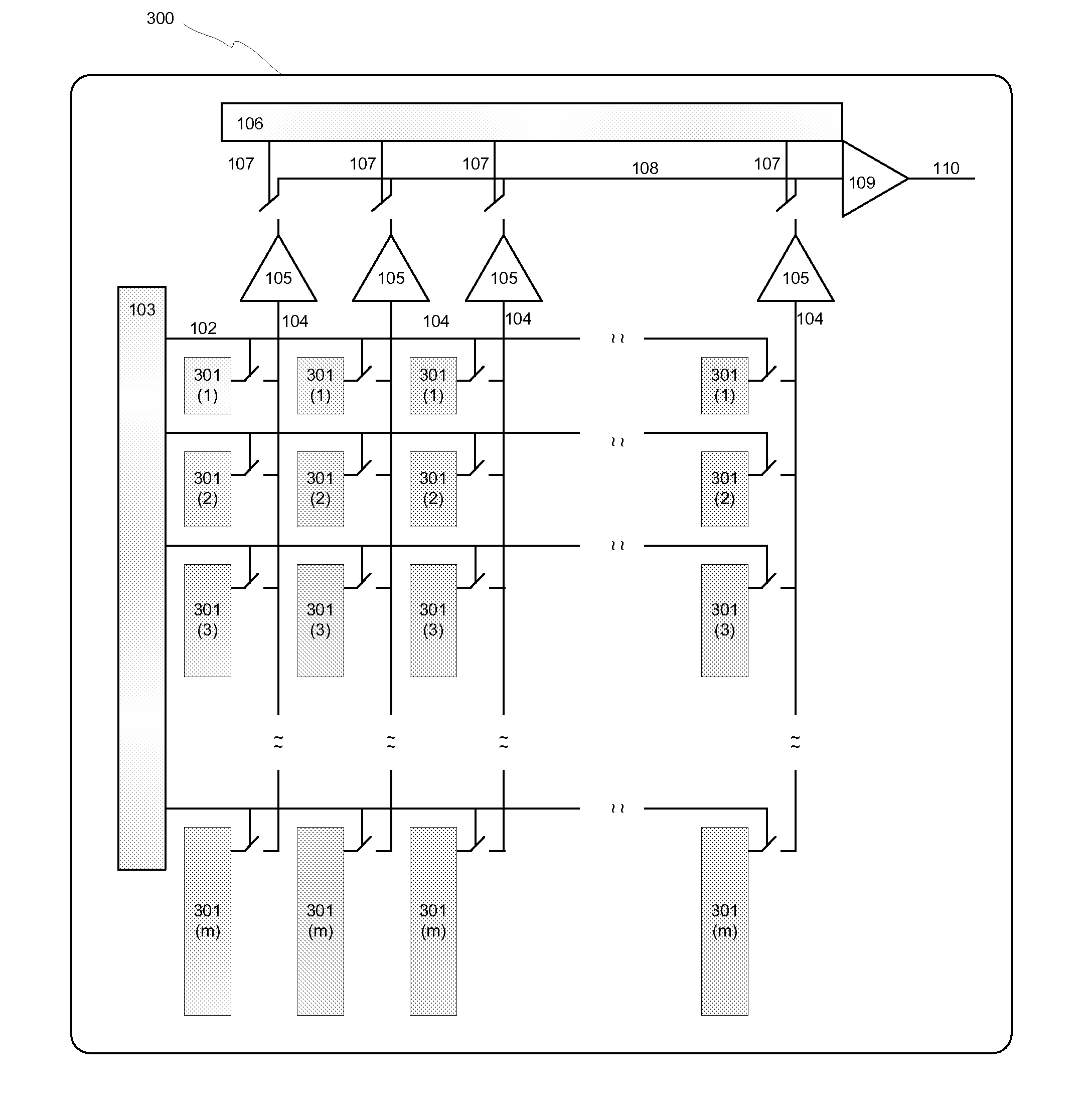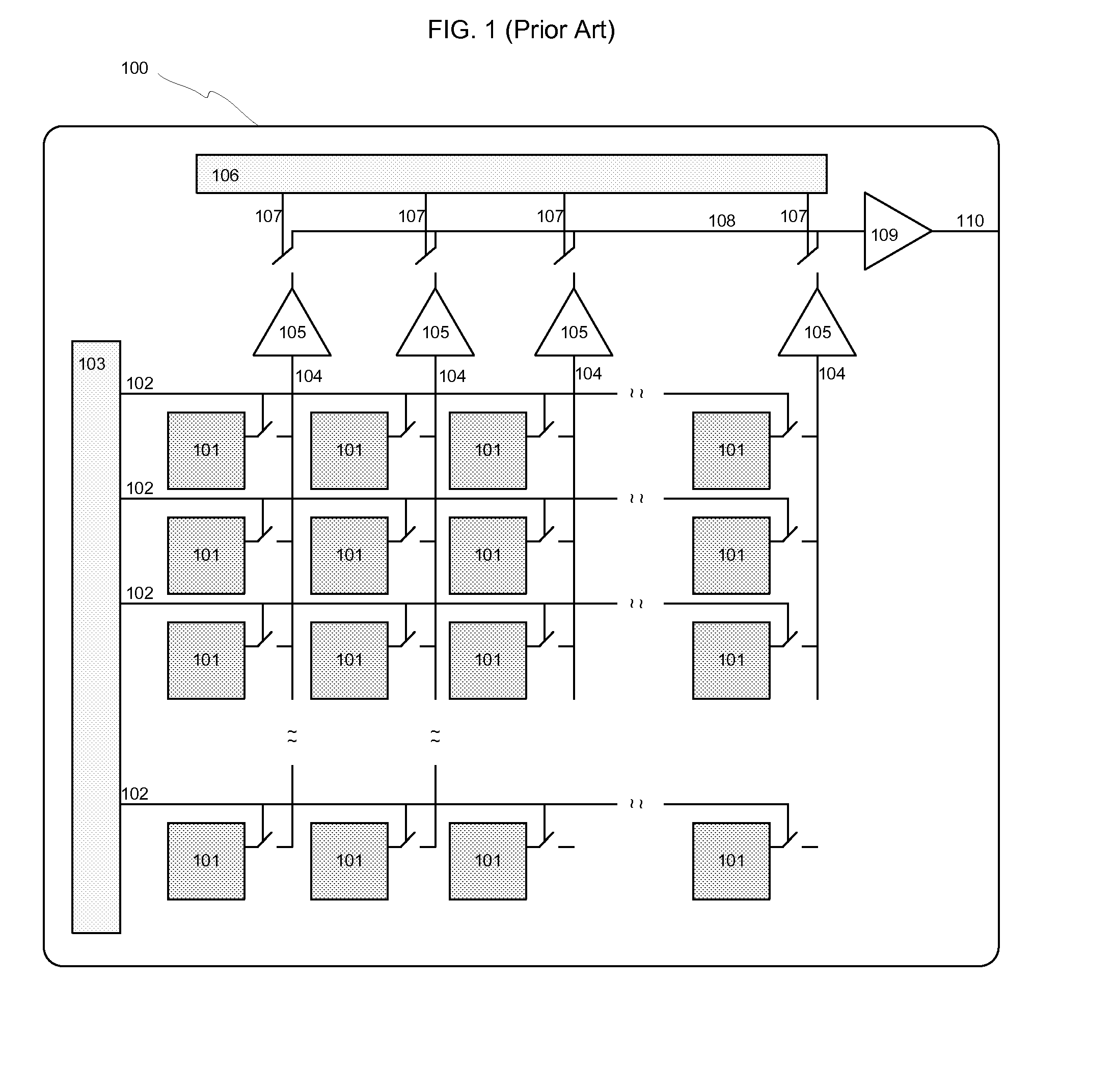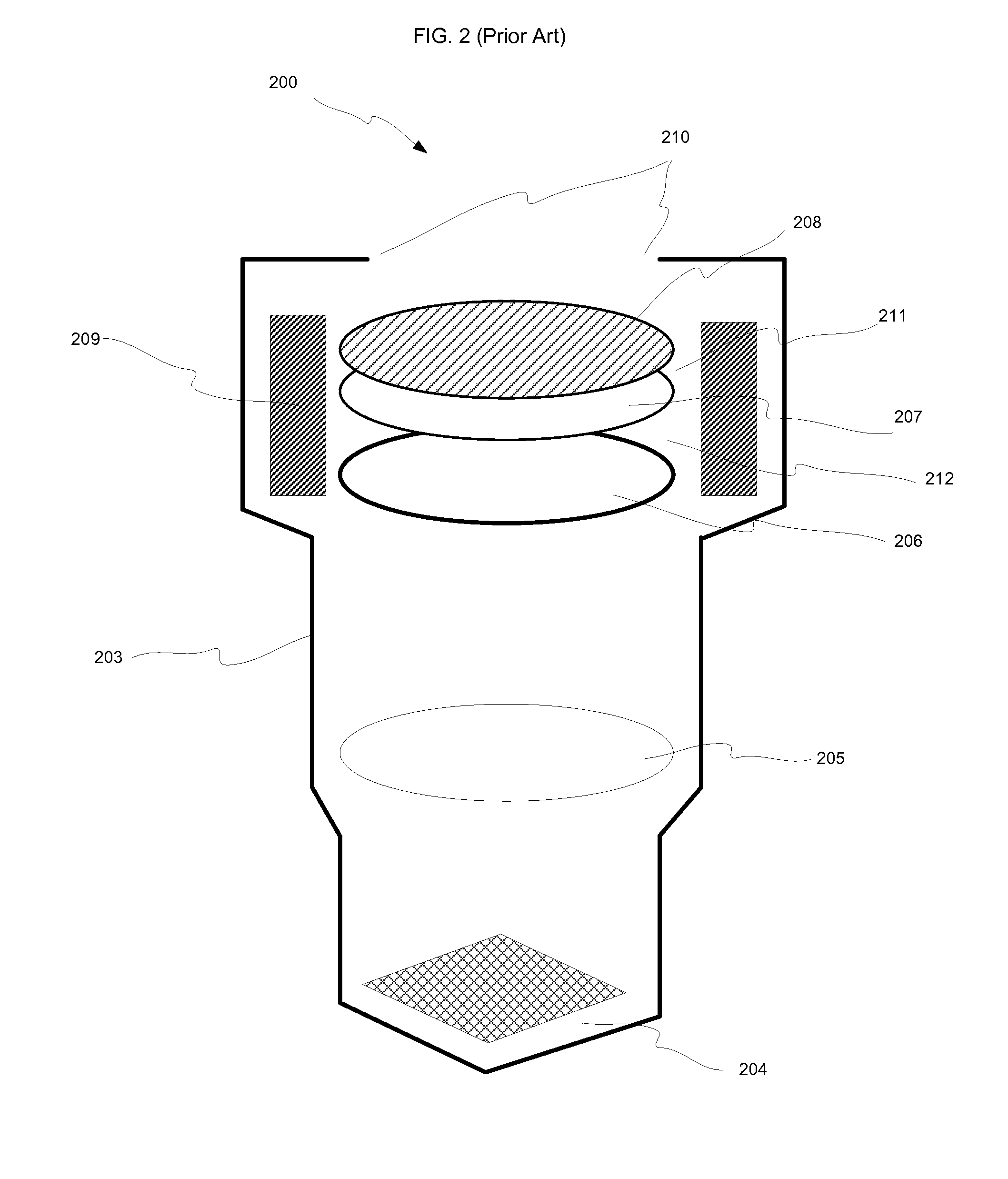Adjustable CMOS sensor array
a sensor array and cmos technology, applied in the field of semiconductor devices, can solve the problems of large dynamic range and low noise cmos sensors that have not been used, image intensifier devices suffering from increasing fixed pattern noise (fpn), signal to noise ratio (snr) and dynamic range, etc., and achieves the effect of faster ra
- Summary
- Abstract
- Description
- Claims
- Application Information
AI Technical Summary
Benefits of technology
Problems solved by technology
Method used
Image
Examples
Embodiment Construction
[0042]FIG. 1 is a diagram of a conventional CMOS Pixel sensor 100, which comprises a plurality of square pixels 101 of identical dimensions arranged in a focal plane array. The incoming photons are detected via a photo sensing element in each pixel 101 such as a photodiode or a photogate. The diagram is applicable to both Active Pixel Sensor (APS) and a Passive Pixel Sensor. For an APS, there is at least one additional reset control line going to all pixels (not shown here). The charge is either converted to voltage inside pixels 101 for an APS design or in column bus amplifiers 105. A vertical shift register 103 controls the raw selection via buses (switches) 102, and the voltage (for APS) or charge (for passive pixel) is transferred to the column buffers 105 via a signal line 104. Horizontal shift register 106 controls selection of the output of the column buffers 105 via buses (and switches) 107 and 108. The outputs of the column buffers 105 are then individually selected by the ...
PUM
 Login to View More
Login to View More Abstract
Description
Claims
Application Information
 Login to View More
Login to View More - R&D
- Intellectual Property
- Life Sciences
- Materials
- Tech Scout
- Unparalleled Data Quality
- Higher Quality Content
- 60% Fewer Hallucinations
Browse by: Latest US Patents, China's latest patents, Technical Efficacy Thesaurus, Application Domain, Technology Topic, Popular Technical Reports.
© 2025 PatSnap. All rights reserved.Legal|Privacy policy|Modern Slavery Act Transparency Statement|Sitemap|About US| Contact US: help@patsnap.com



